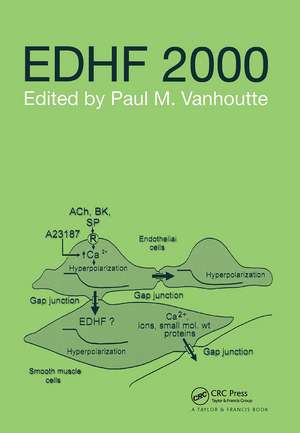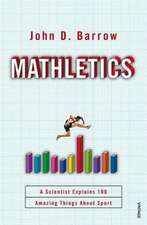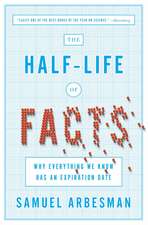Edhf 2000
Editat de Paul M. Vanhoutteen Limba Engleză Hardback – 29 noi 2001
EDHF 2000 comprises the proceedings of the Third International Symposium on endothelium-dependent hyperpolarizations. The first two meetings established a role for EDHF and other chemical factors involved in endothelium-dependent hyperpolarizations. These proceedings focus upon the role of gap junctions in cardiovascular responses and investigate the chemical identity of EDHF. Additional chapters on Physiology, Hormonal Modulation and Pathological Changes are also included.
EDHF 2000 will be of interest not only to physiologists and pharmacologists puzzled by the complexity of the interactions between the endothelium and underlying vascular smooth muscle cells, but also clinical researchers and physicians treating patients with cardiovascular diseases.
Preț: 1025.98 lei
Preț vechi: 1251.19 lei
-18% Nou
Puncte Express: 1539
Preț estimativ în valută:
196.33€ • 209.94$ • 163.69£
196.33€ • 209.94$ • 163.69£
Carte tipărită la comandă
Livrare economică 18 aprilie-02 mai
Preluare comenzi: 021 569.72.76
Specificații
ISBN-13: 9780415269049
ISBN-10: 0415269040
Pagini: 544
Dimensiuni: 178 x 254 x 29 mm
Greutate: 1.19 kg
Ediția:1
Editura: CRC Press
Colecția CRC Press
ISBN-10: 0415269040
Pagini: 544
Dimensiuni: 178 x 254 x 29 mm
Greutate: 1.19 kg
Ediția:1
Editura: CRC Press
Colecția CRC Press
Public țintă
Professional and Professional ReferenceCuprins
1. What do gap junctions do anyway? 2. Cardiovascular gap junctions: Functional Diversity, complementation and specialization of connexins 3. Endothelium and smooth muscle pathways for conduction along resistance microvessels 4. Membrane potential and calcium responses evoked by acetylcholine in submucosal arterioles of the guinea-pig small intestine 5. The effects of ouabain, 18a-glycyrrhetinic acid and connexin-mimetic peptides on intercellular communication in cells expressing a
Descriere
Understanding the nature and role of endothelium-derived hyperpolarizing factor is crucial in the quest for improved treatments for hypertension, diabetes, ischemia-reperfusion, and other vascular disorders. The book focus on the role of gap junctions in cardiovascular responses and investigate the chemical identity of EDHF. EDHF 2000 will be of interest not only to physiologists and pharmacologists puzzled by the complexity of the interactions between the endothelium and underlying vascular smooth muscle cells, but also clinical researchers and physicians treating patients with cardiovascular diseases.






